Luxsin X9 Desktop DAC AMP Review – Ultra Style Music
Luxsin X9 is a $1099 USD Desktop DAC and Headphone Amplifier, with an R2R Volume control, Hi-Res Playback, DSP 3-Core processing, 4″ Display and with HDMI Arc support developed by Eversolo. Today we will review the Luxsin X 9 and also compare it with other similarly priced Desktop DAC Headphone AMPs, including my current favorite Desktop DAC AMP FiiO K17 (899 USD), Keces S3 (1300 USD), and Dethonray Listening M1 (2599 USD).
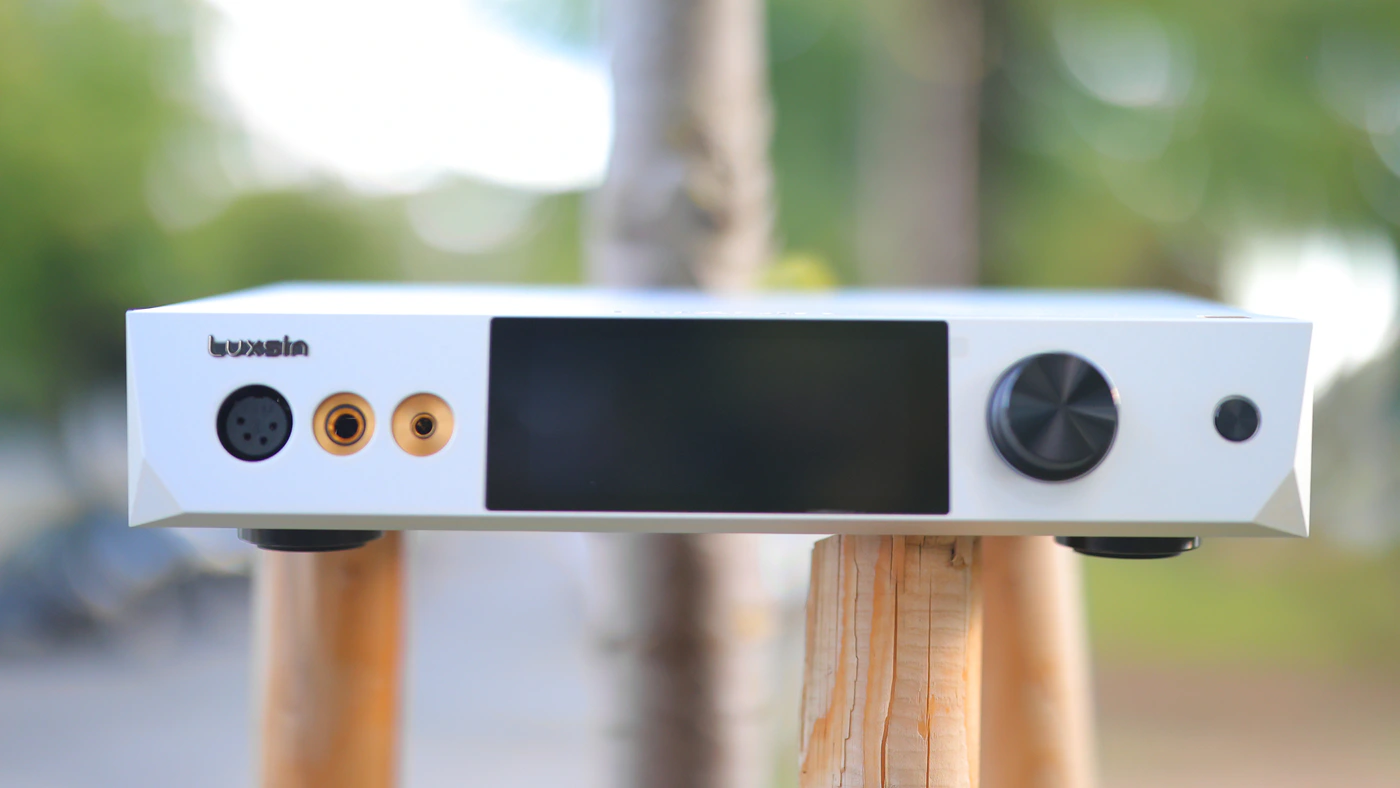
Introduction
Luixsin is a sub brand of EverSolo, and if you’ve read our review exploring the DAC-Z6 from EverSolo, you already know that the company has some of the best engineering we’ve ever seen. DAC z6 is an excellent Desktop DAC AMP, but I avoid adding it to the comparison rooster for X9 because it is less than half the price. This being said, we’ve seen that EverSolo was able to keep up with far pricier DAC Headphone AMPs, so reviewing X9 is surely going to be interesting.
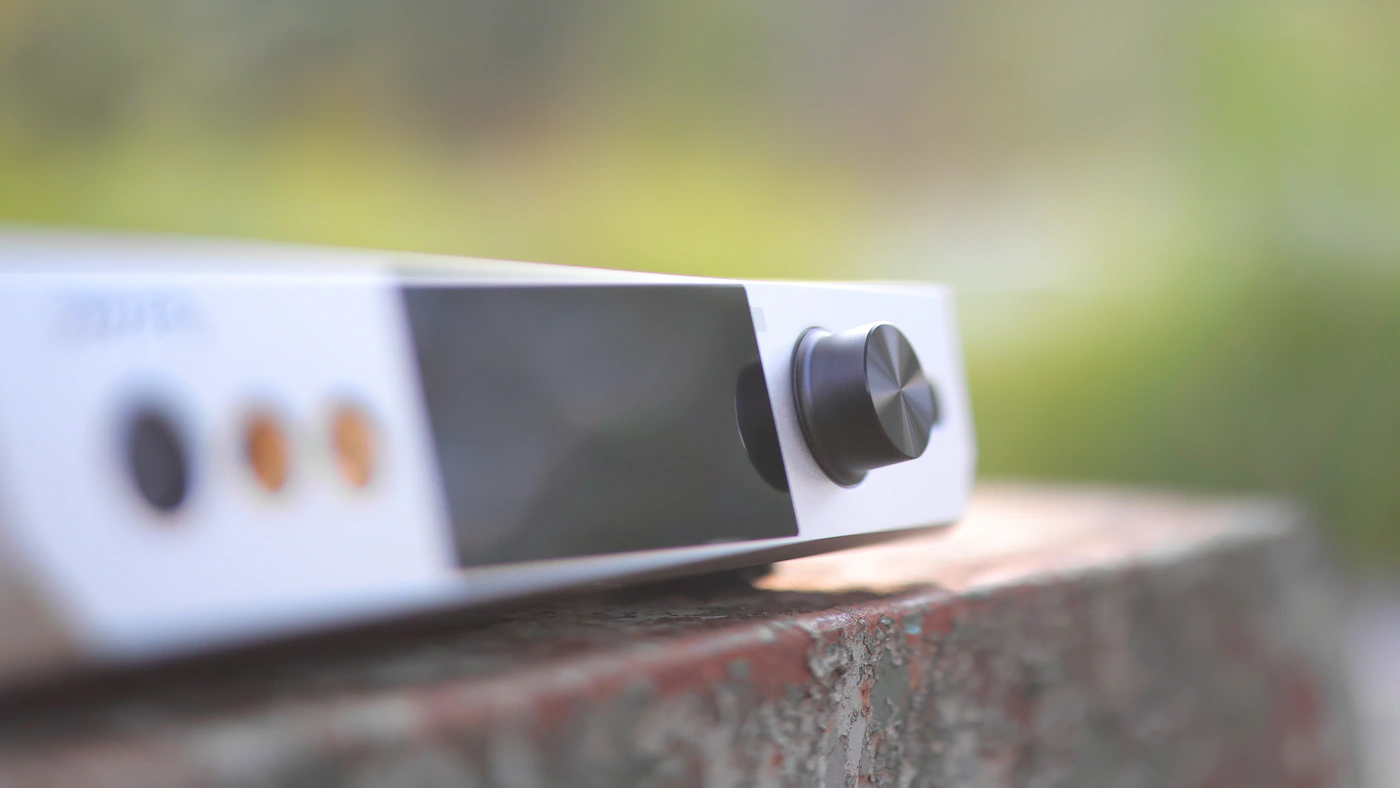
As an Amazon Influencer, I earn from qualifying purchases, and using the purchase links in my reviews helps me maintain this website and Youtube Channel. Audiophile-Heaven has no Ads and our Youtube Channel has no midroll ads, and our work is supported by Affiliate Links and Donations. Huge thanks to Luxsin and EverSolo for providing the sample for this review, in exchange for my honest opinion.
Product Link
Amazon – https://amzn.to/4qlJY3K
Aliexpress – https://s.click.aliexpress.com/e/_c30I8wzN
Build Quality – Design
Starting from the bottom, Luxsin X9 is a high-end DAC for pure sound and with a sleek and high-end interface, design and display, powered by intuitive and stable software. To extend a bit, it features a complex HP-EQ that applies real0time hardware based EQ adjustments that allow you to get closer to the harman curve for each headphone and IEM, and this software has a database of over 2500 headphone models. So far, we have reviewed around 1000 products in total, so in theory X9 should cover most headphones and IEMS that exist on the market.
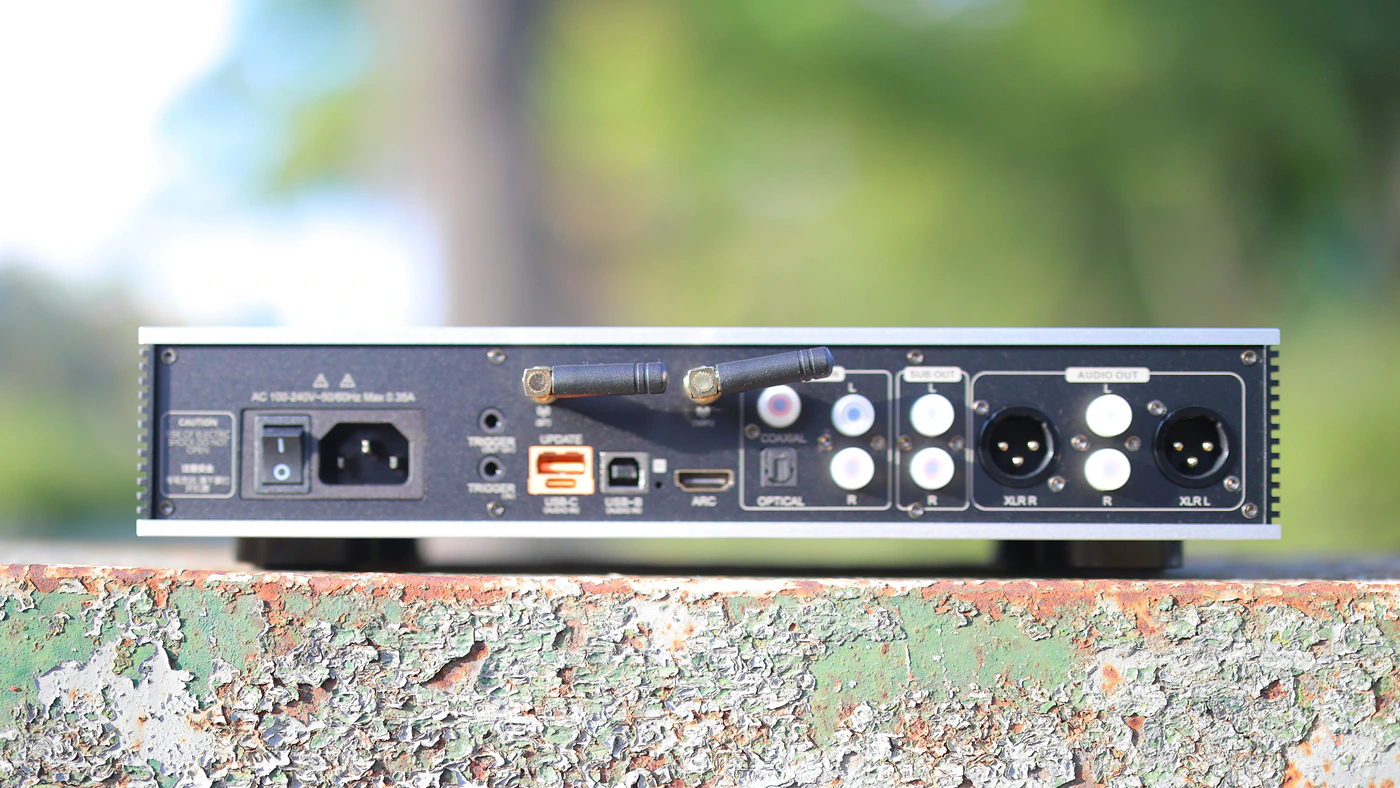
Luxsin X9 also comes with a fully balanced R2R volume control circuit composed of high precision components with left-right channel adjustments accurate down to 0.1 dB. To power your headphones, X9 has an impedance self-check system that automatically measures the impedance of the connected headphones for both the 4.4mm headphone output and the 6.3 SE output, and intelligently recommends the most suitable output gain setting. This has zero impact on the sonic quality, thanks to the implementation designed by Luxsin and EverSolo.
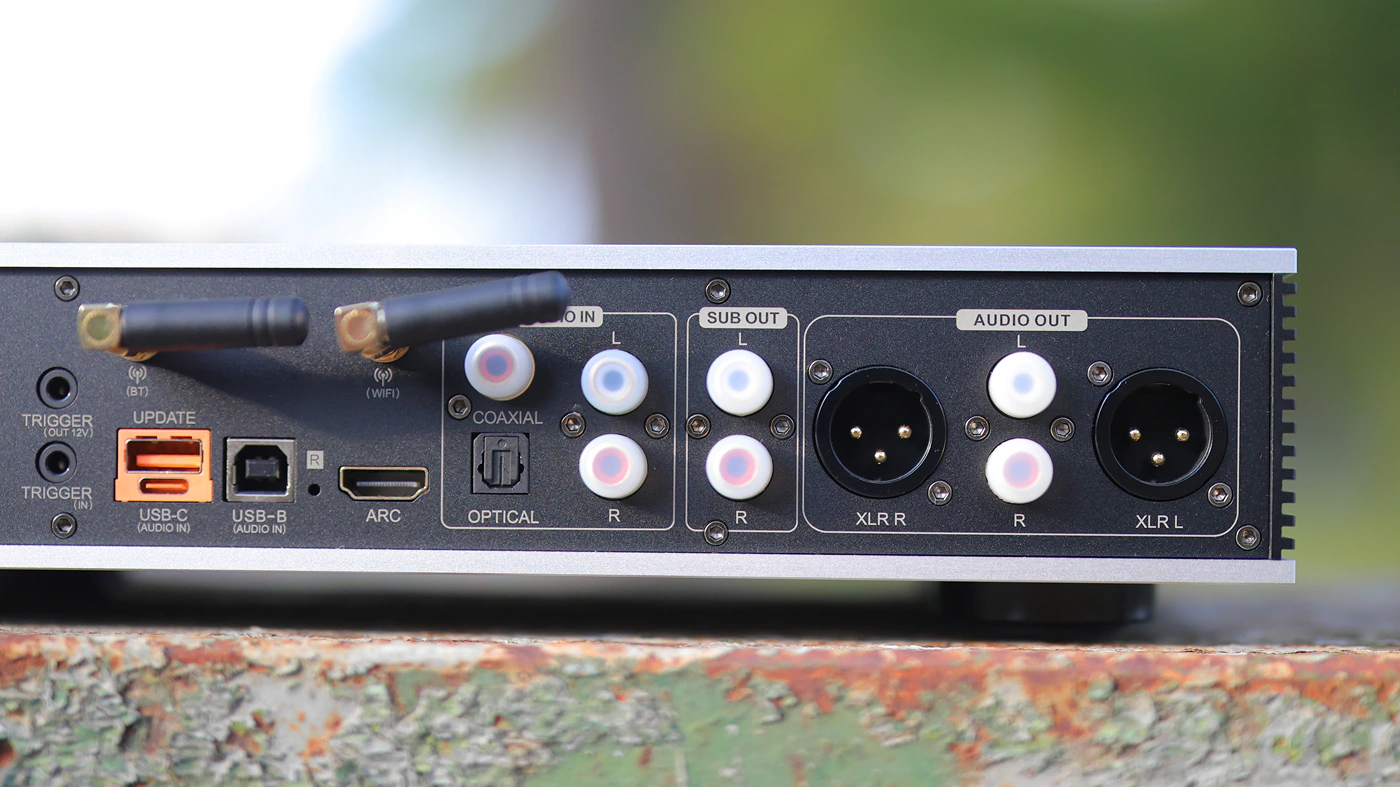
Analogue and Digital parts of the circuit are separated, and the motherboard features a star-shaped voltage distribution circuit that has an ultra-low ripple of just 40nV, and a THD+N of -120dB. Something that a lot of people asked me about, X9 features a digital crossfeed for a more natural, speaker-like soundstage in your headphones, and you get to control it all through the 4.0″ vibrant display that has a crisp resolution and which has multiple VU Meter colors and themes.
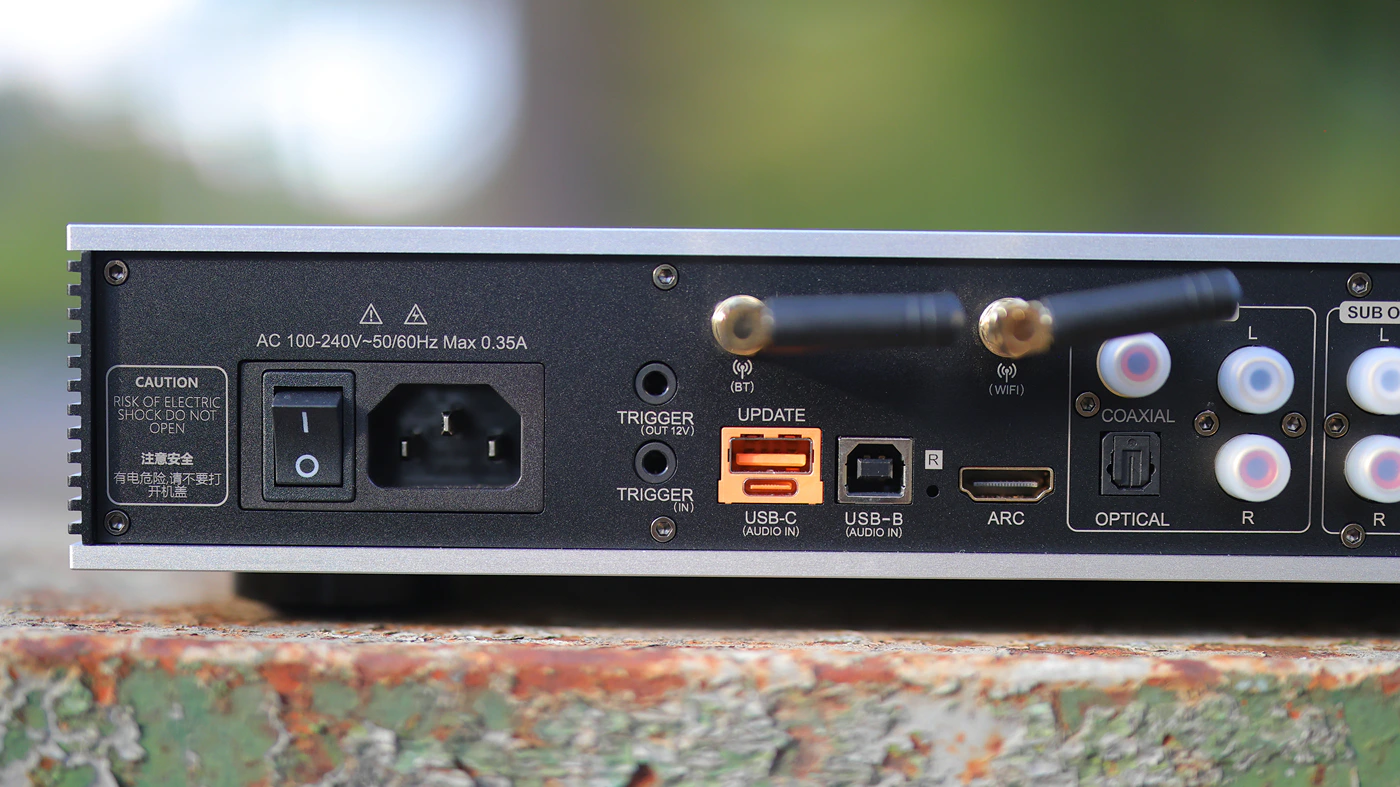
At the DAC level, X9 is powered by a complex pair of a AK4191 + AK4499EX DAC, model which can be found on the FiiO S15, FiiO K17, Lotoo PAW GT2, Dethonray Listening M1, and FiiO Q15. This being said, they all have a different combination and design, and the DAC alone does not guarantee a certain quality of sonic performance, but you can easily see that X9 uses a solution that is only used in other high-end devices. IV conversion is handled by an OP1612 with a 6120A2 headphone amplifier for a fully differential balanced circuit.
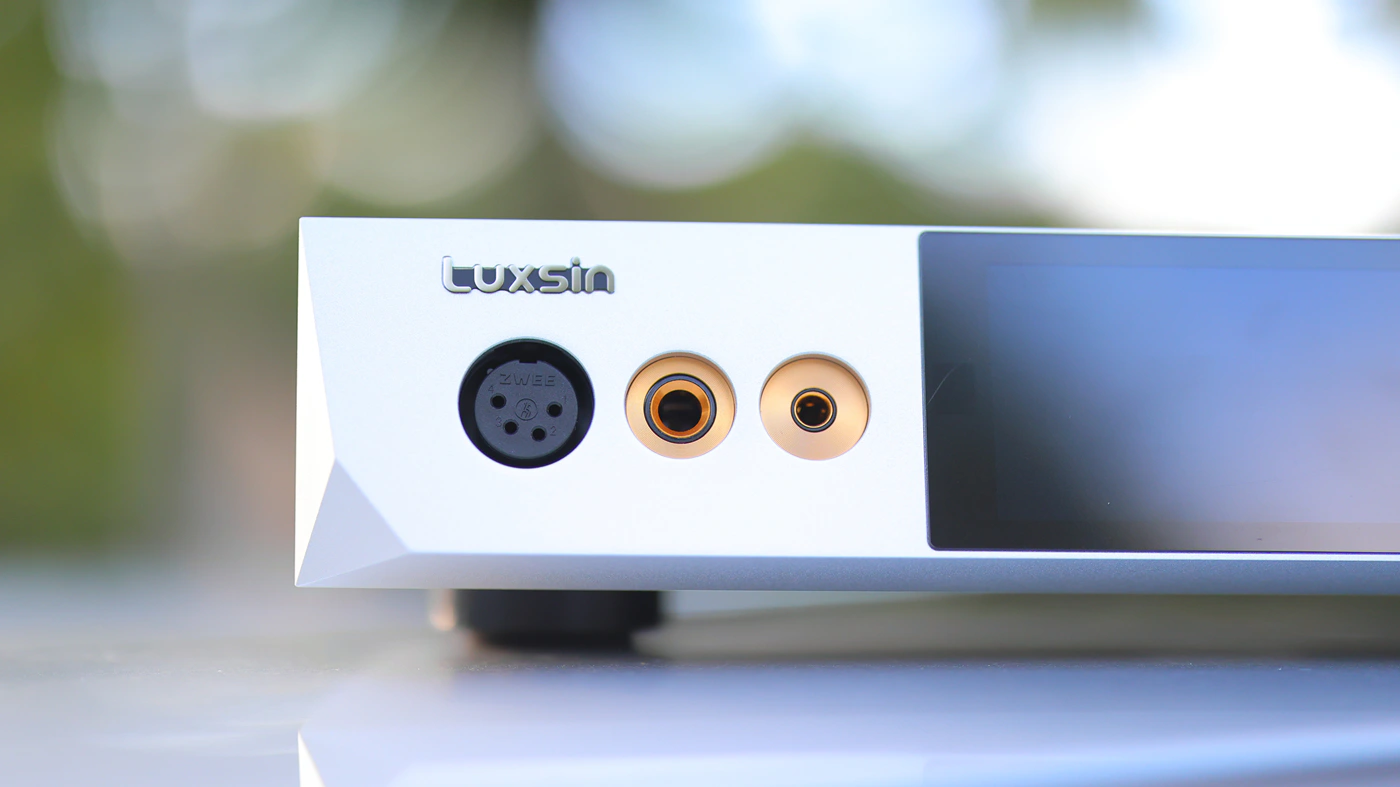
On the software level, X9 runs an advanced automotive-grade RTOS ensuring stable and efficient control of all I/O interfaces, with support for infrared remote, wireless control via phone or computer, and OTA updates for easy performance improvements. Unique to Luxsin is the Luxsin Dynamic Negative Feedback, or DNF tech, utilizing the OPA1612 + TPA6120A2 combo to significantly reduce the harmonic and intermodulation distortion, ensuring a cleaner, more pure listening experience.
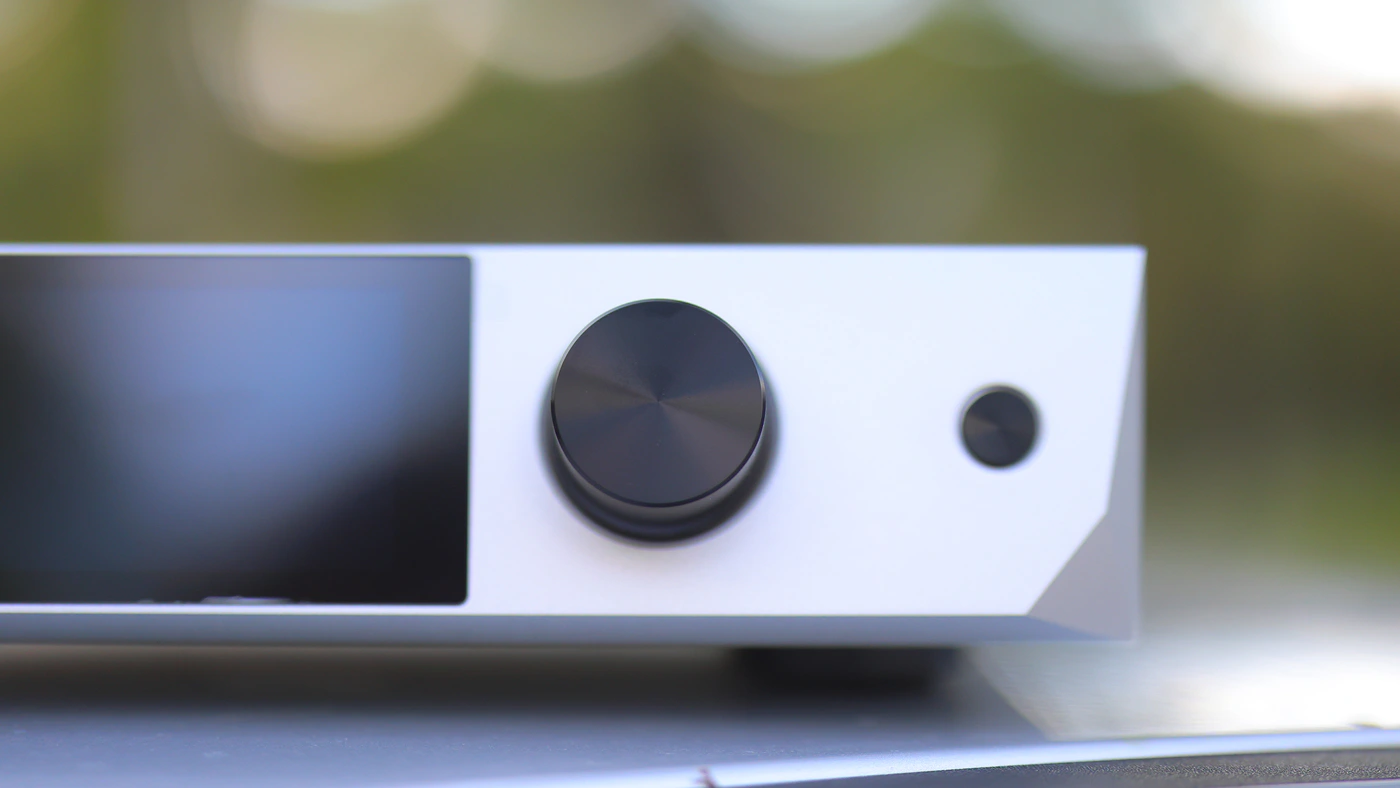
For full support for all this high-end tech, Luxsin uses premium red WIMA capacitors, gold-plated aluminum electrolytic capacitors, high-grade green non-polarized capacitors, OhNo continuous cast silver-plated cables and TI BB OPA1612 OP-AMPs. Full operation of the unit includes HDMI ARC, Optical, coaxial, analog inputs, USB B / USB C input, 12V trigger ports, and dual subwoofer outputs. This is all besides the headphone outputs which are both SE and balanced, and the balanced and RCA PRE and DAC outputs for stereo systems.
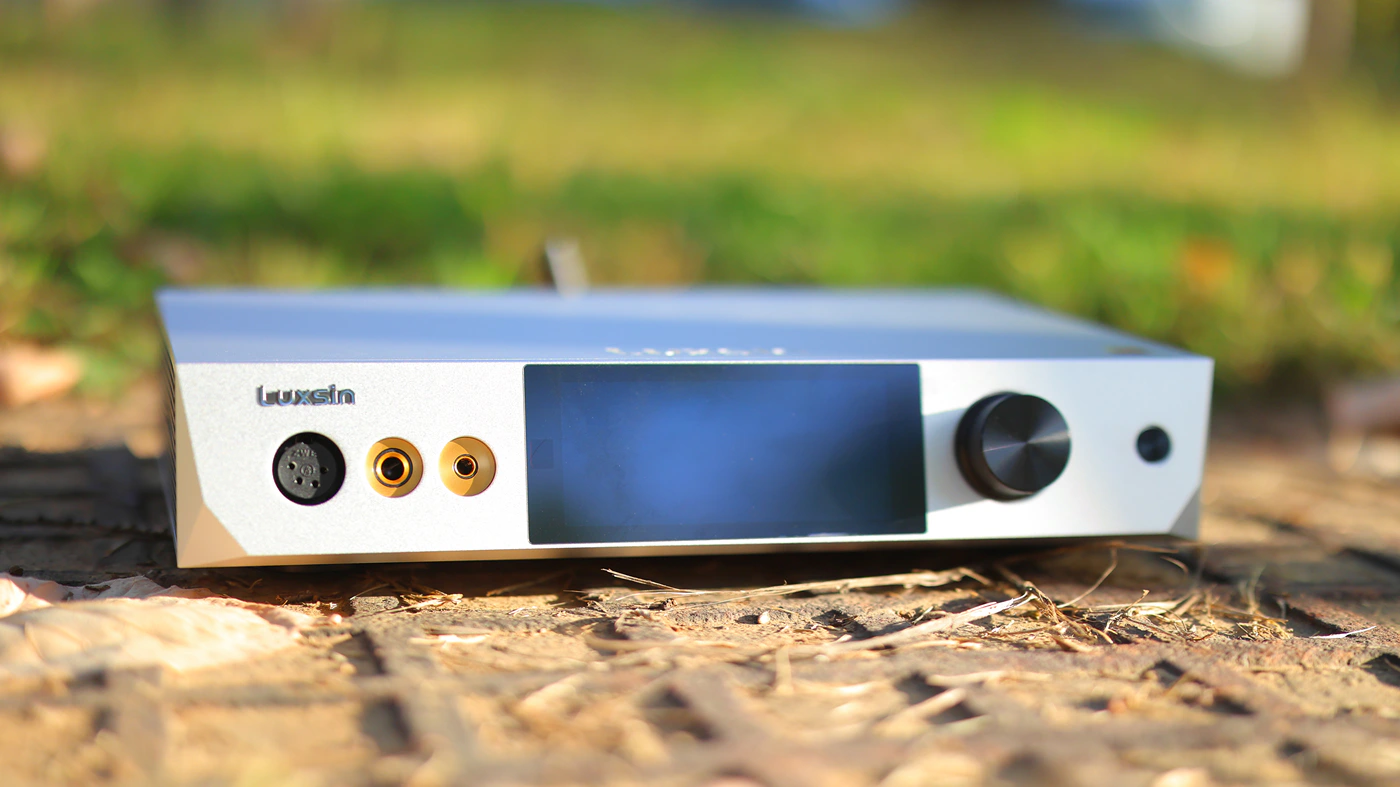
To give you the geekiest tech data possible, we have DSD support up to DSD512, PCM support up to 768kHz / 32-Bit, Bluetooth 5.0 with AAC and SBC support, Coax, HDMI ARC, and Analog input with RCA. Output includes XLR Balanced, RCA unbalanced and subwoofer output, with the XLR having a max output level of 4.2Vrms, a dynamic range higher than 128 dB, a SNR higher than 128 dB, and a THD+N lower than 0.000096% at 120 dB, and a crosstalk of lower than -117 dB. For the RCA output, max level reaches 2.1 Vrms at 0dBFS, a dynamic range higher than 125 dB, a SNR higher than 125 dB, a THD+N lower than 0.00010% at -119 dB, and a crosstalk lower than 114dB. The headphone audio output has a level between 4 and 15 Vrms, with a dynamic range higher than 128 dB and a SNR higher than 128 dB, for a THD+N lower than 0.00016% at -116 dB.
USB DAC – Subjective Usage
Eveversolo and Luxsin made the X9 a very easy to use, configure and versatile DAC / Headphone AMP, and for me it looks better, and reacts better than FiiO K17, which is my reference for the desktop DAC AMP experience. X9 has a beautiful, high-end interface, VU meters are beautiful and you can really configure a couple of them, you can instantly turn on and off special effects, and it works flawlessly with windows, with no drivers needed.
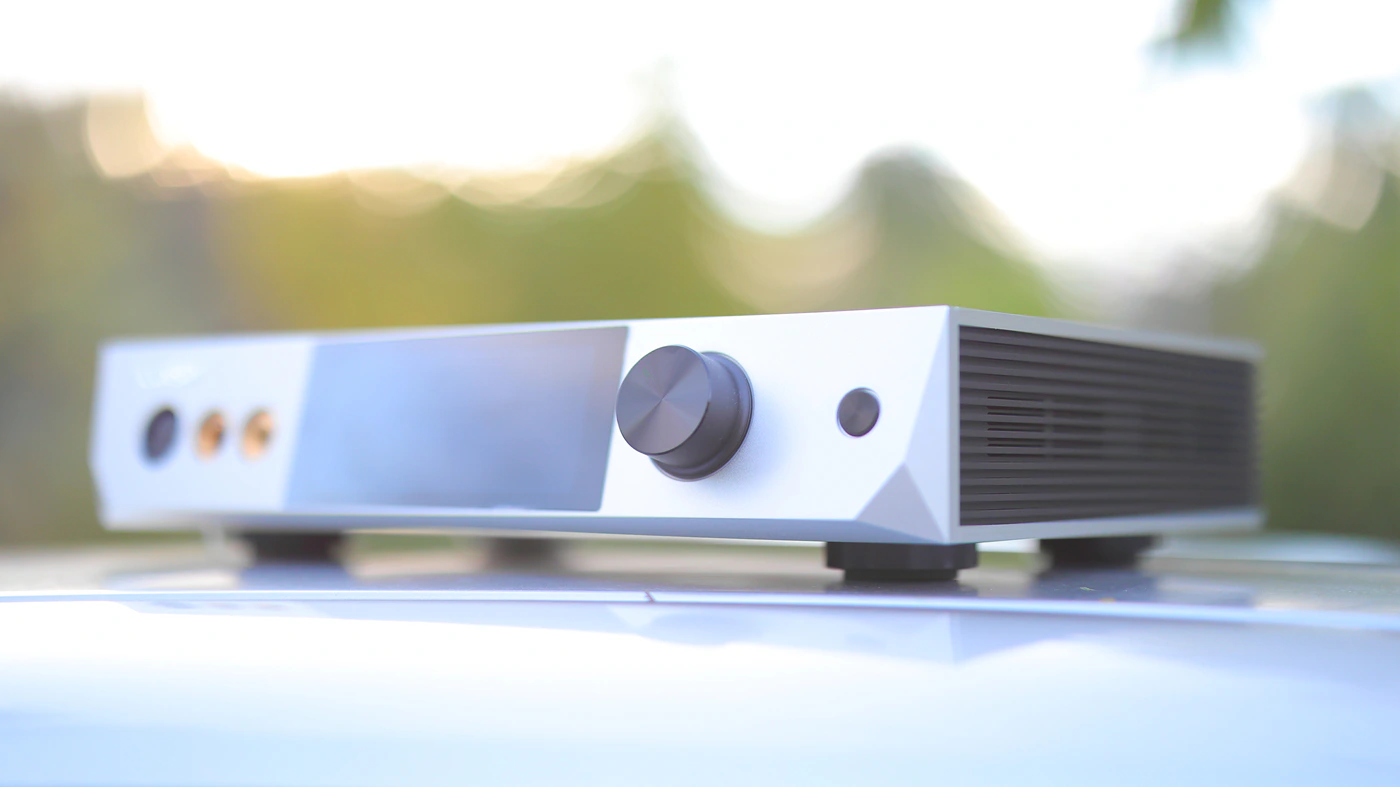
XLR and RCA Line Pre outs are excellent with no audible background noise, headphone output is clean and the detection algorithm works by default with no steps needed. In fact, this is something that makes X9 an excellent choice, it is super beginner friendly, no need to fiddle with complex options to get an excellent sound up and going. Impulse response is instant, there is no delay and it is perfect for playing games and video playback.
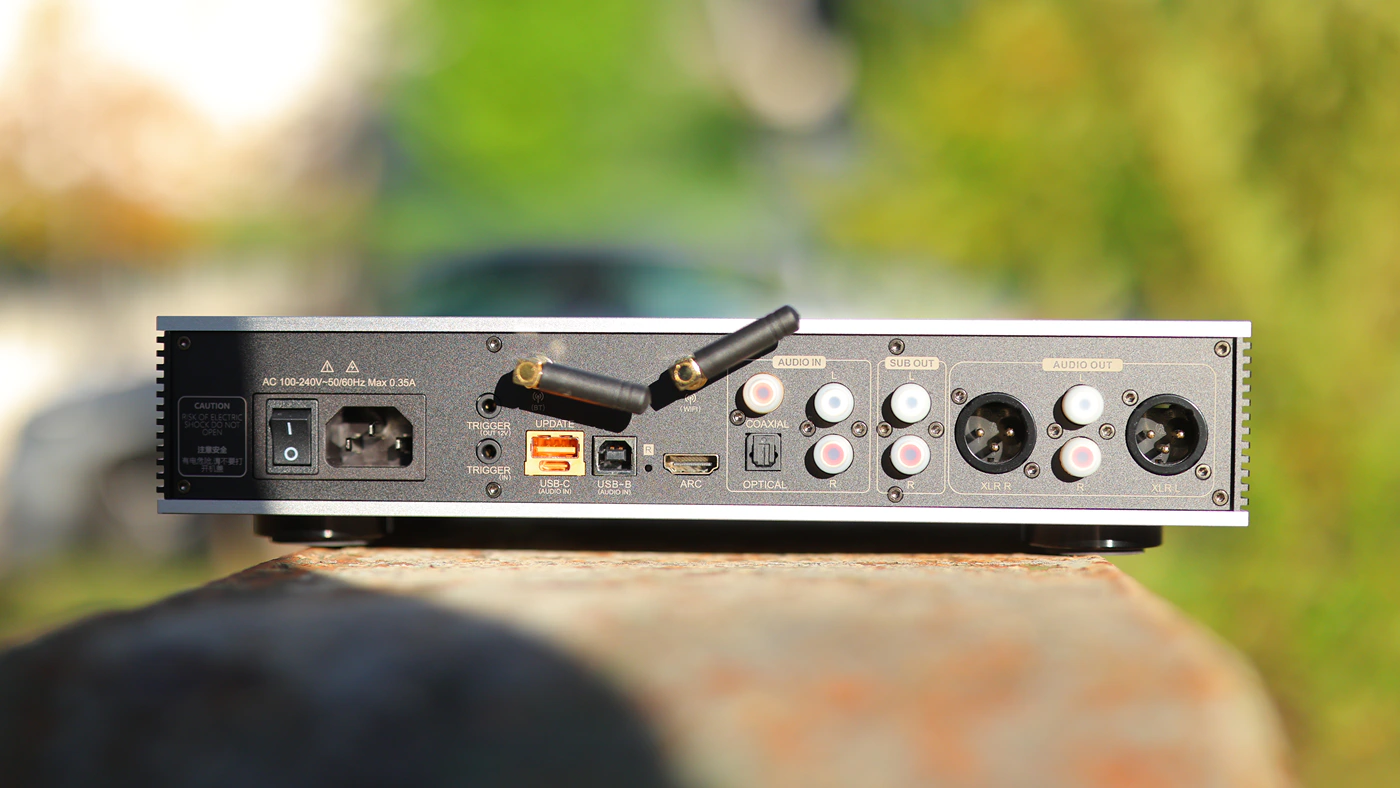
Crossfeed works well, it can increase the feeling of soundstage size but also increases scattering, which lowers instrument separation by design. Effect is a part of the UI that gives you multiple tuning options including Stereo Width which I feel increases the soundstage width much better than crossfeed, but I am happy to report that all effects add zero delay, and can be used with the USB DAC input. Basically, X9 is able to apply in real time, with no delay all the effects and tweaks it has to offer.
Sound Quality
Pairings – To test the Luxsin X9 I have paired it with multiple headphones and IEMs, including Raptgo LEAF D01, Palma DHS-1, KBEar Cepheus, Crosszone CZ-10 Enhanced, Erzetich Thalia, Erzetich Mania V2024, TinHIFI T7, FiiO FT13, NFAudio NE4, Sivga Peng, Moritz Dragon, Crosszone CZ-8a Enhanced, Sendy Audio AIVA 2, Tangzu TianPeng, Soundz Flame, YanYin Canon PRO, Dunu Vulkan 2, Letshuoer Mystic 8, and HIFIMAN Isvarna. This allowed me to experience X9 over the course of around 2 months with multiple systems, and I even used it as a DAC for the HIFIMAN Mini Shangri-La Electrostatic system, and to power up a set of Topping B100 Monoblock amplifiers, driving Pylon Audio Jasper 18 Monitor speakers. Impressions in the Sound Quality part of this review have been taken after the burn-in of X9, but I experienced it for longer, it seems to require a couple tens of hours of burn-in with no EQ and no effects engaged for its sound to settle in the one described in the review. Contrary to popular belief, X9 actually gets brighter, more crisp, after burn-in, instead of smoother like other devices.
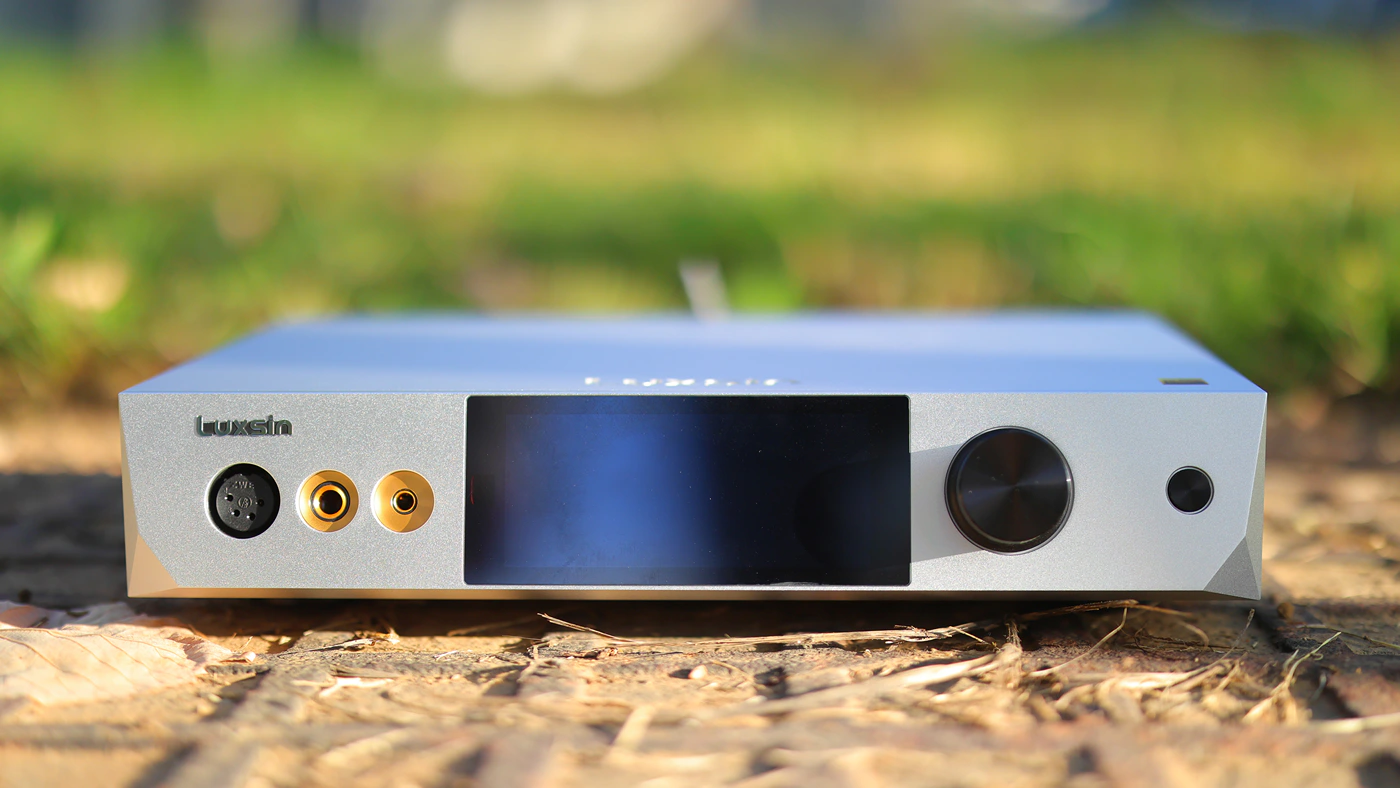
Driving power for headphones is very good, it can easily handle the likes of Isvarna and Erzetich Mania, but also He1000 Unveiled and Susvara Unveiled. For IEMS, I could not hear a noise floor, despite trying the X9 with multiple sensitive IEMs including those that usually easily show hiss like Letshuoer Mystic 8 and TianPeng. Balance is excellent and you have enough volume control for all IEMs and headphones, plus the auto impedance detection helps a lot with gain levels, but we will re-visit this in the loudness saturation gradient part of the review.
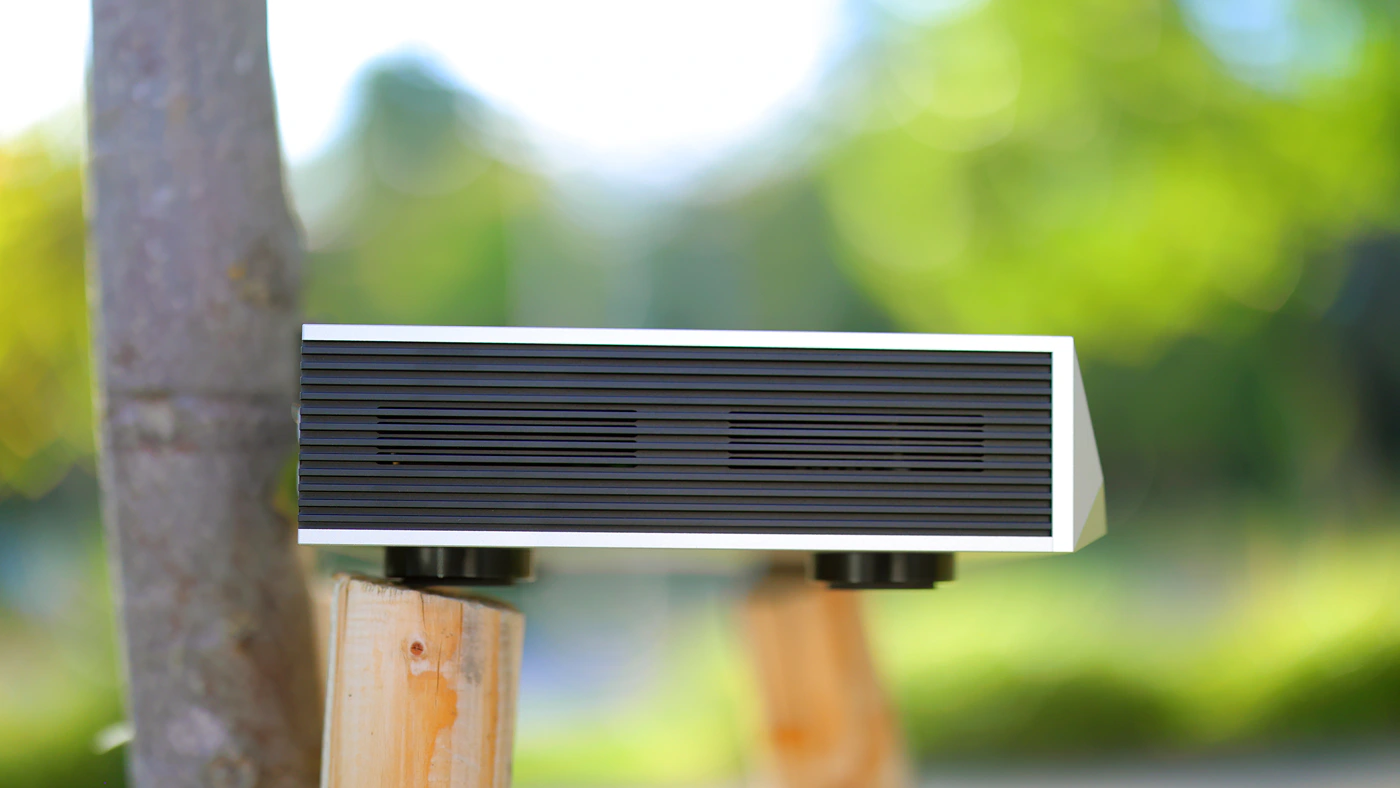
Overall Signature – Luxsin X9 bears a bit of the EverSolo house signature, the sound it produces is a bit warm, a bit ever so playful, and even with all the enhancements turned off, it is very dynamic, engaging and clean. In fact, it is a bit cleaner, a bit more defined than FiiO K17, has a slightly better bass definition, bass is a bit more punchy rather than boomy, and X9 has a very crisp definition for the treble. It really brings out the effects and instruments in the background. At first, it felt like a bit of dynamic compression, as that usually renders those background bits more clean and clear, but X9 has no trace of compression, it has an ultra wide dynamic range, it just happens to render everything and not miss a single note.
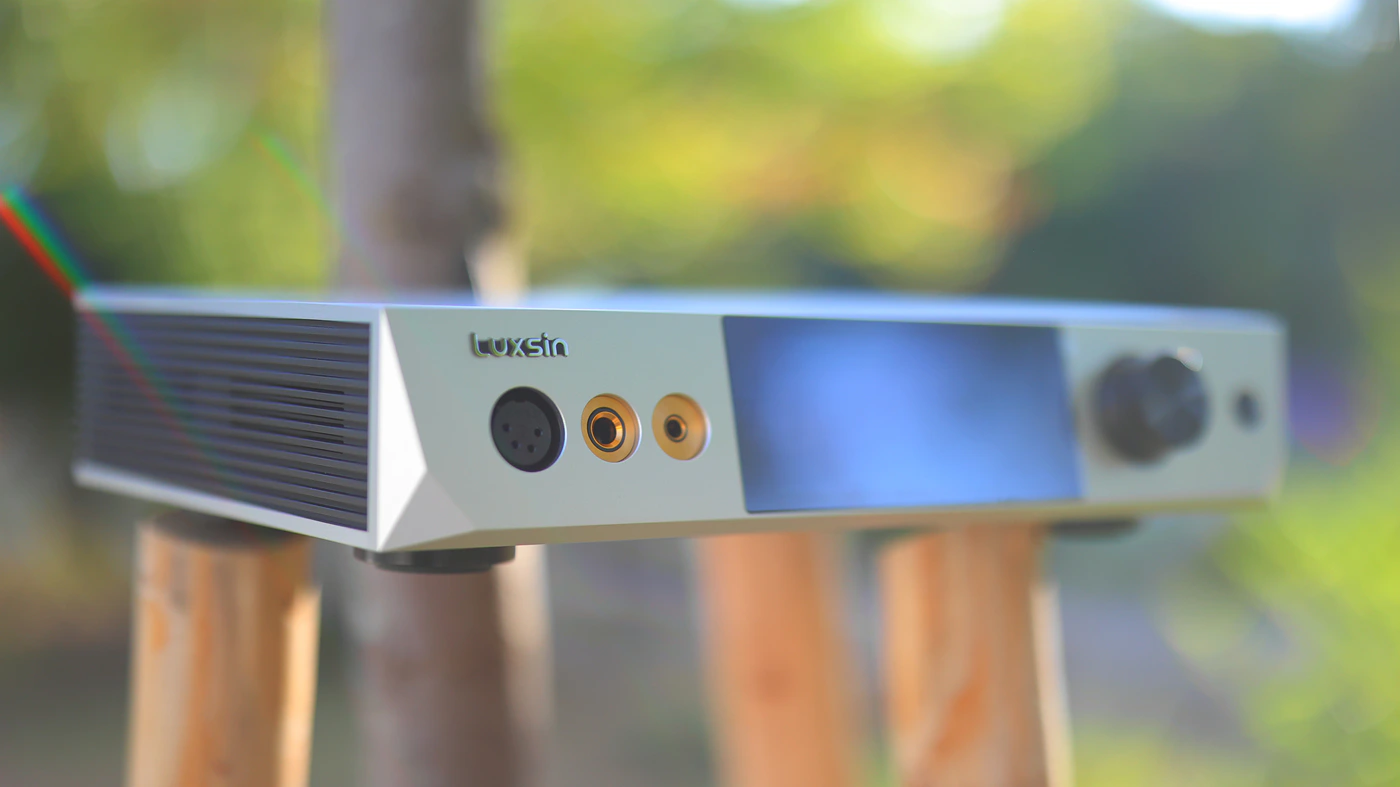
Bass – Luxsin gave X 9 a beefy, powerful and super punchy low end that has a crisp, rounded definition. It places emphasis on every single bass hit, leaves nothing vague, has a groovy, complete and rounded presentation for the low-end. It matches well with all music styles, gives bass guitars in rock and metal warmth and fullness, gives bassline for jazz and classical substance and presence and has enough speed and impact for EDM. It is one of the most complete and powerful sounding DAC / Headphone AMPs in the price range, even compared side by side with all of the others I usually reference.
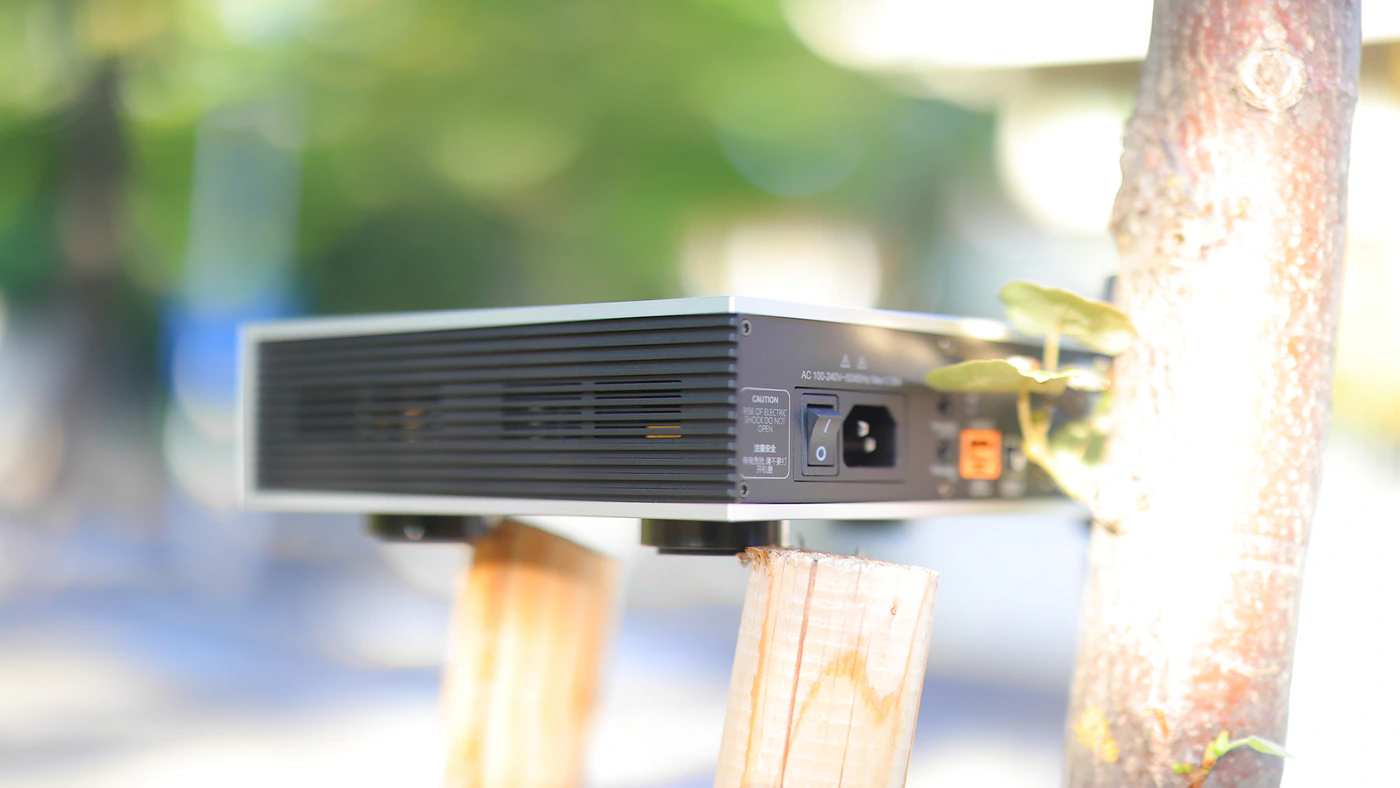
Midrange – X9 has a slightly recessed midrange, especially the lower midrange which is very neutral, clean and controlled, but it re-gains a bit of extra power and punch in the upper midrange, where it gives pianos, violins and female voices a crystalline crispness and presence. It is incredibly capable when it comes to rendering music with emotion and presence for high-pitched instruments, including guitar solos. The more neutral lower midrange helps control bloom and veiling, but it takes a bit away from the power of deeper male voices, which are quite neutral. The separation between the vocal, forward layer and the background layer of X9 is far stronger than with most of the competitors, it simply pushes the forward layer in your face, while recessing the background behind, yet still rendering that background crisp and clear.
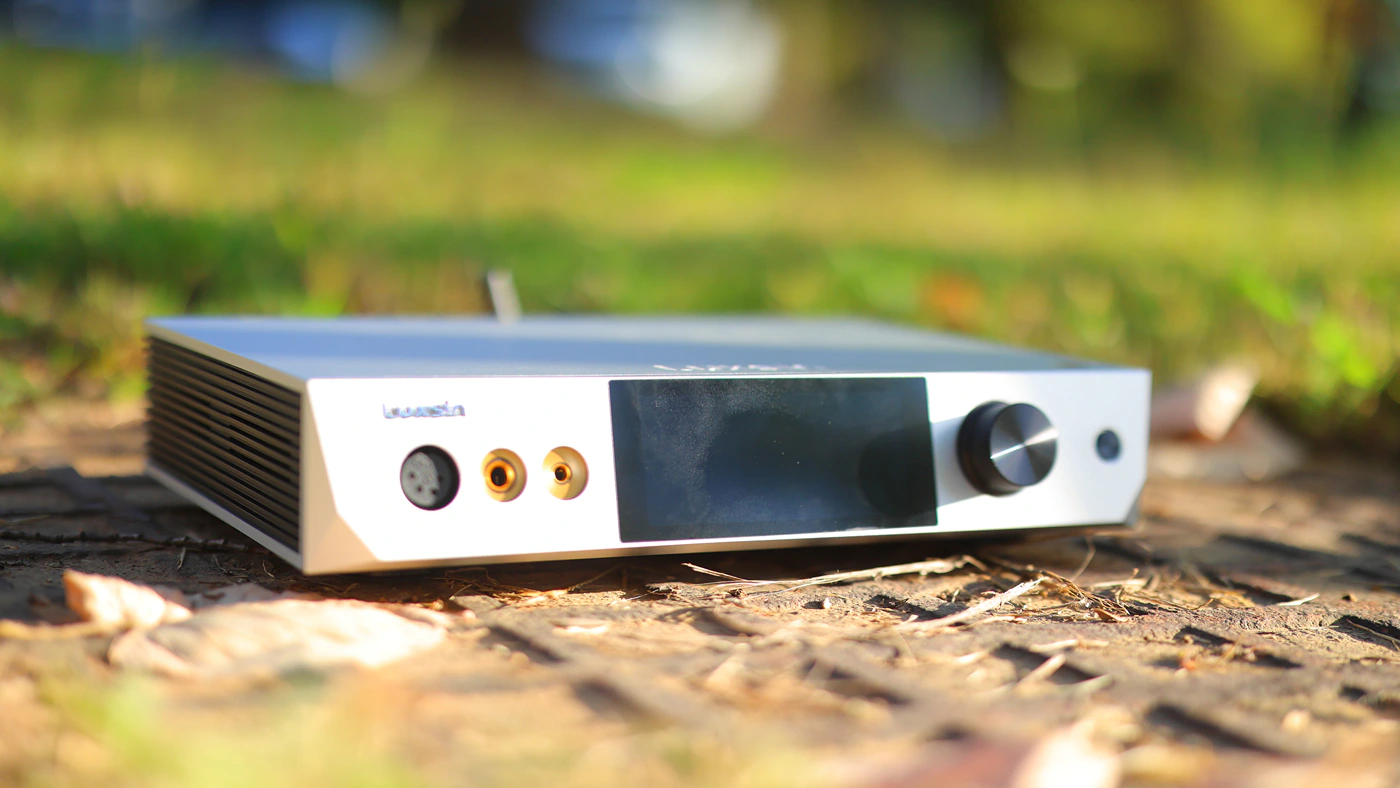
Treble – At the top end, Luxsin X9 is super crisp, well-defined and it doesn’t miss any single bit of air and note, it is bright, ultra revealing and renders absolutely everything. I love its presentation with all music styles, rock, metal, pop, EDM, it simply matches beautifully with everything from A to Z, all bands can take advantage of its signature, but as it is quite neutral and revealing in the treble, it needs headphones and IEMS, or systems that don’t sound harsh or fatiguing by default, as it won’t hide that. I believe that it delivers a better overall performance than most of the competition if you want to hear an honest, brutally clear treble.
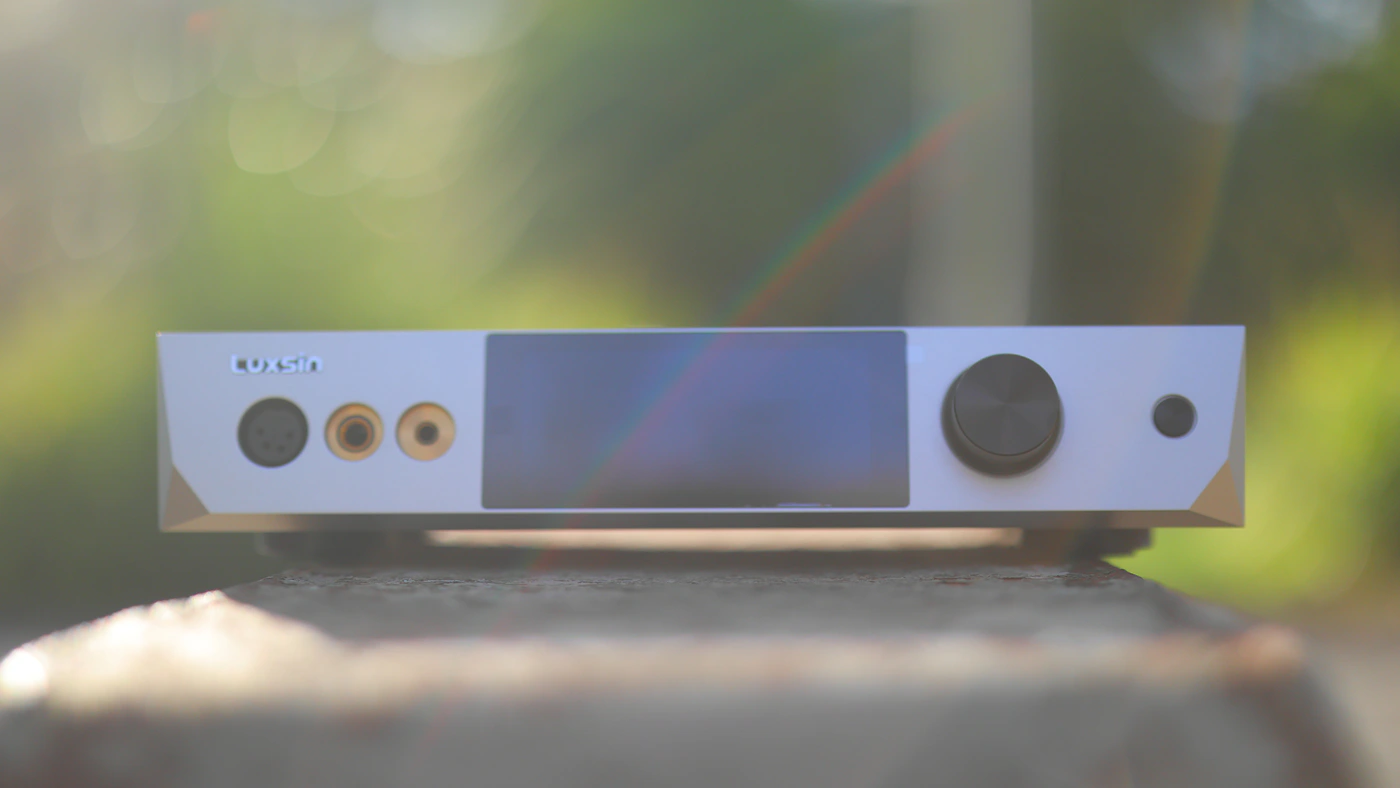
Dynamic Range And Textures – Dynamic range is incredibly wide, but it is not a central focus for X9, it doesn’t force music in the dynamic extended territory, and at first I actually thought it sounded compressy, because it renders more background information than I was used to hear, so my initial feeling was that it would achieve this through compression. This being said, with classical and dynamically rich music, it sounds natural and compression free. Textures are super crisp, detailed, and rendered with all the information available in them, good and bad. I feel like its impulse response is natural-fast, it can render some harsh and fatiguing elements in music, but it also renders a groovy and full, rounded bass. Basically, it is quite transparent and honest, doesn’t take anything away, doesn’t add anything.
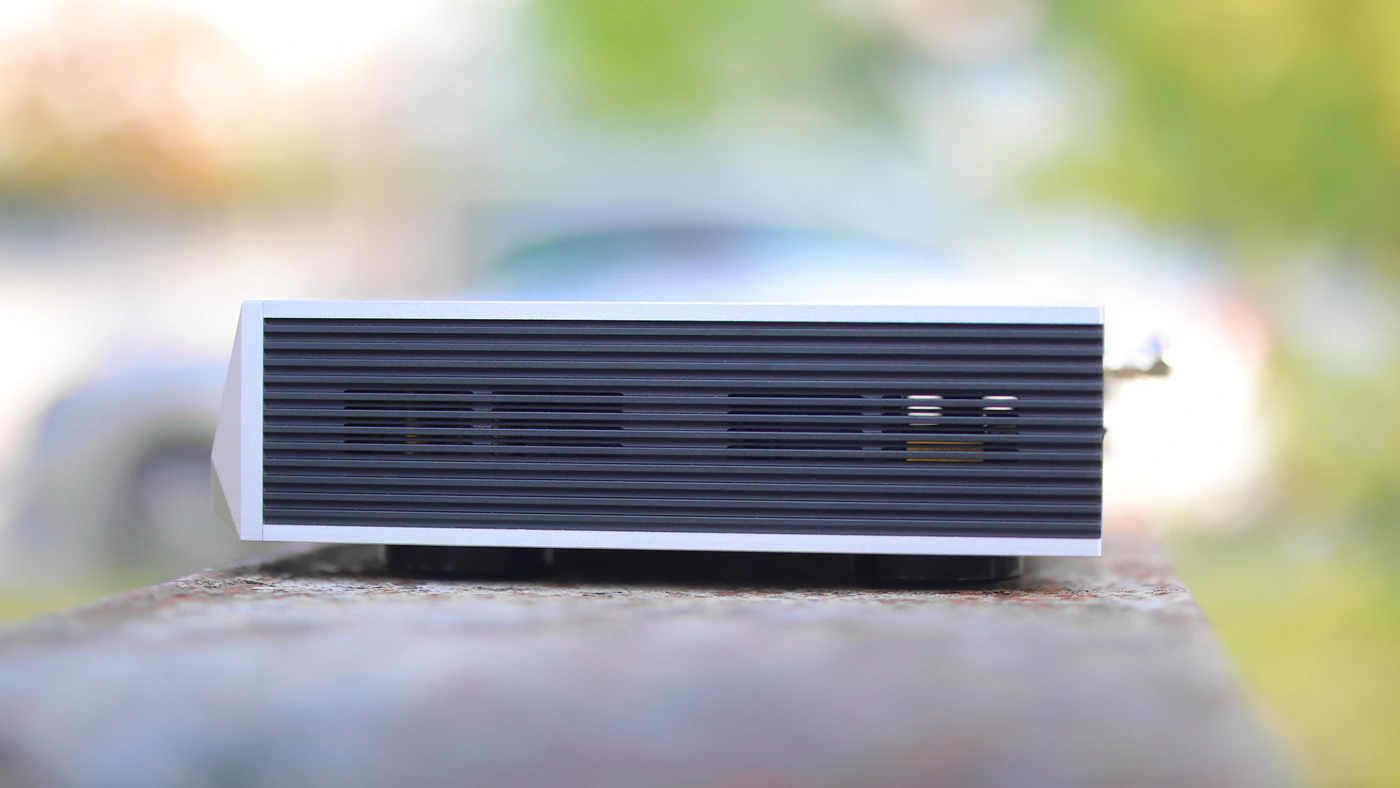
Loudness Saturation Gradient – As X9 detects the impedance and gain level of your headphones, I extensively tested for how it handles the loudness saturation gradient. It basically balances the sound for IEMS beautifully, can achieve a zero background noise and full control for IEMS, but with headphones, things get more interesting. This is because, for example Isvarna has a low impedance but high power needs. The same can be said about He1000 Unveiled and Susvara Unveiled, or Hedd D1. Happily, Luxsin X9 handles Isvarna really well, and the same can be said about He1000 Unveiled and Susvara Unveiled. It is quite universal, but will stay in the 16 OHM impedance range for all those headphones, as it detects that they all have a low impedance.
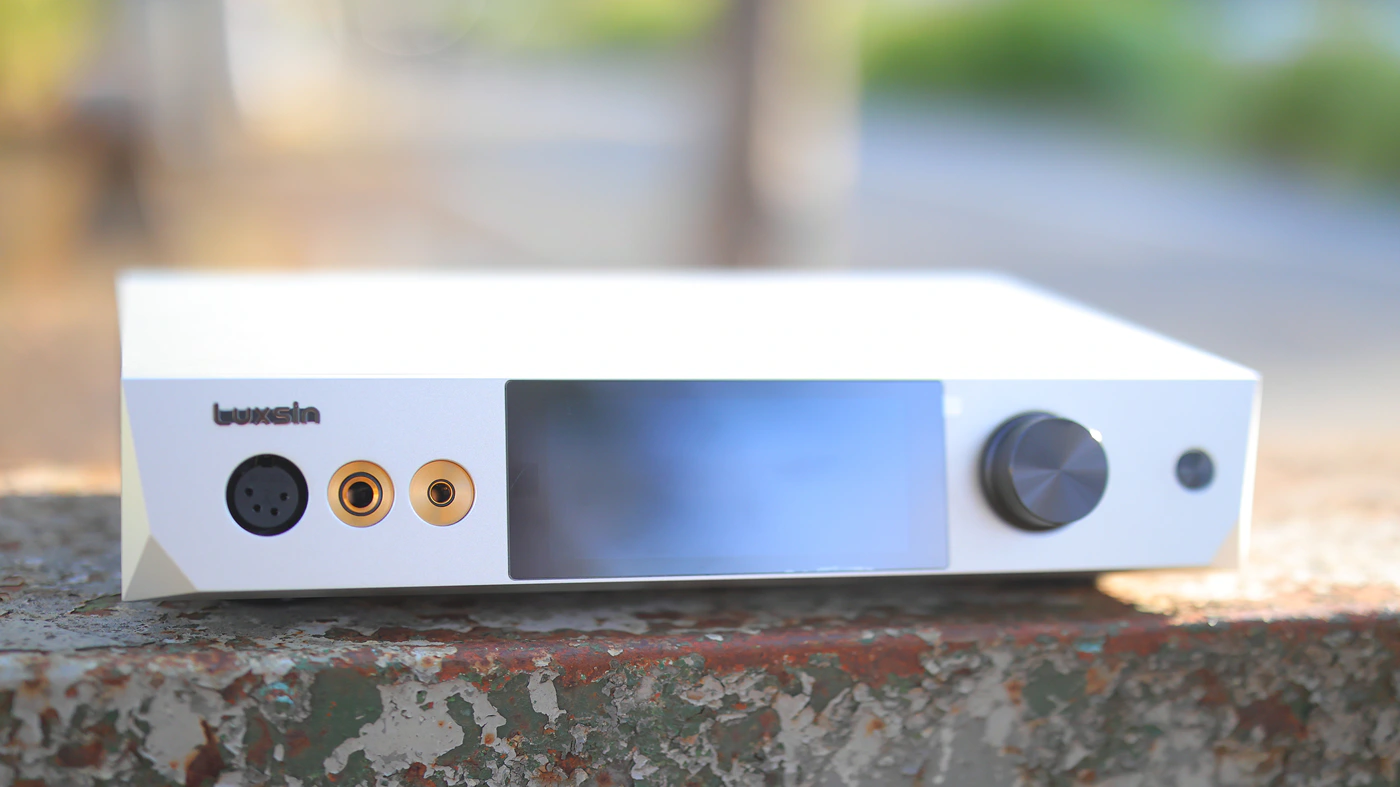
Soundstage – The Staging of X9 is a tricky chapter, it is very well defined, but it does not push or scatter music at all. This being said, it is the only Desktop high-end DAC AMP that has two ways of enhancing the soundstage, with crossfeed and a separate Soundstage expansion tweak that you can engage. I feel at default it sounds rounded, a bit on the intimate side and a bit forward, it brings forward voices and background instruments, but you can very easily enhance that and expand the soundstage, endlessly even. The soundstage width option sounds the most natural out of any stage expansion algorithms and effects I tried so far, it does not exaggerate the treble, and actually comes off as natural.
Comparisons
Luxsin X9 vs FiiO K17 (1099 USD vs 899 USD) – FiiO K17 has the same versatility and decoding abilities as X9, and if not word for word, the display and design language is different, but the actual usage is incredibly similar, headphone outputs are similar, volume wheel experience is similar, both have a display, basically you’re looking at the same usage. X9 is much nicer and feels more high-end in the design, while K17 looks and feels incredibly retro and a bit outdated, as even the VU meters on the X9 are nicer.
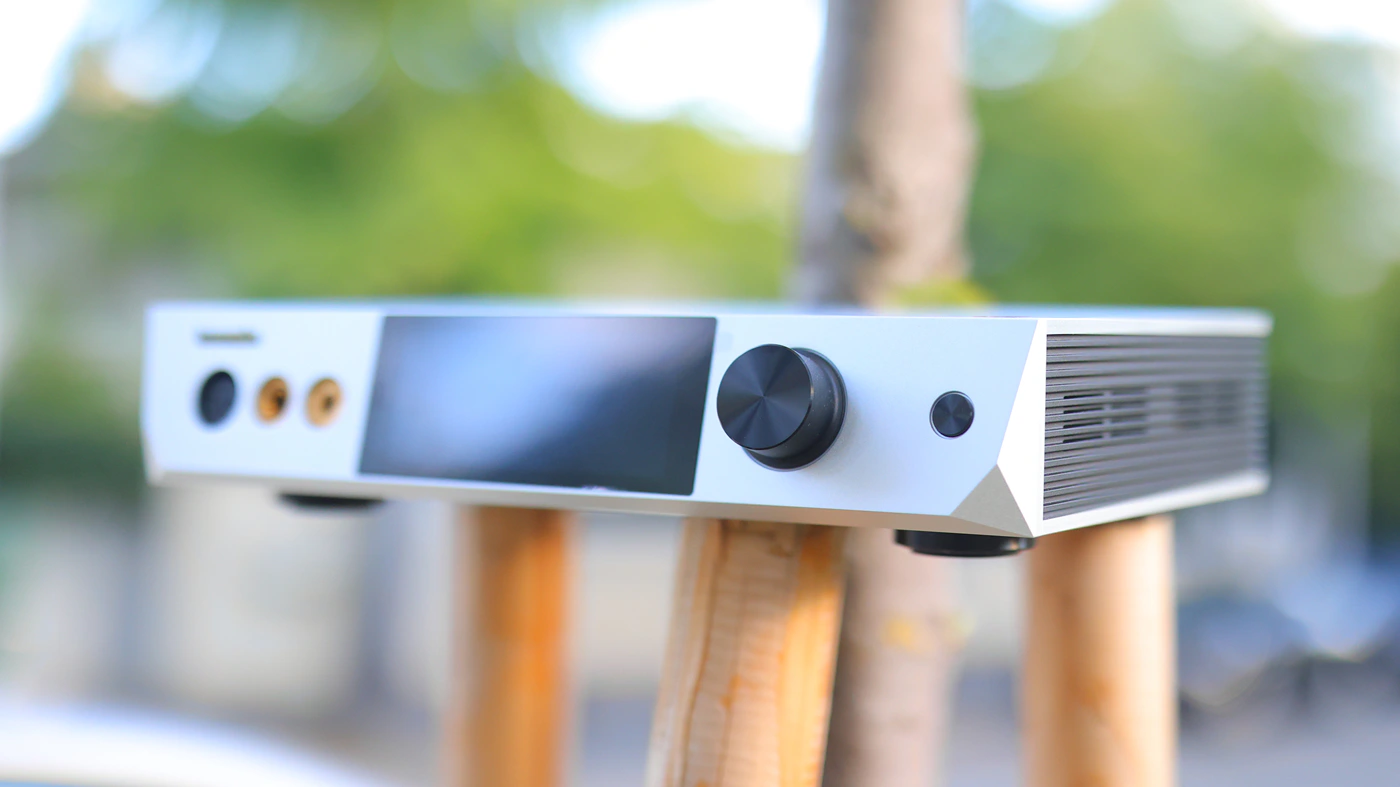
Sonically, X9 can be configured more, since it has far more complex EQ and effects, at default it is a bit more compressy, warmer, more solid sounding and tighter, but you can scatter the sound with Crossfeed, push the soundstage size more with Stereo Width, apply EQ faster and more easily, and with an effective Bass Adjust you can quickly add more low-end and punch to a set of speakers, basically X9 is far more versatile and can match the resolution and depth of K17, and far surpass it using special effects and the embedded EQ options. This applies both to the headphone output and the preamplifier output for speakers. Having a separate subwoofer, X9 is far more complete and a better music center and control unit for a complex system. So basically, if you want to touch those EQ and enhancement options, X9 is a far better purchase, easier to use and configure, and can squeeze better results, while for a purist listening, K17 can sound more dynamic with all enhancements turned off.
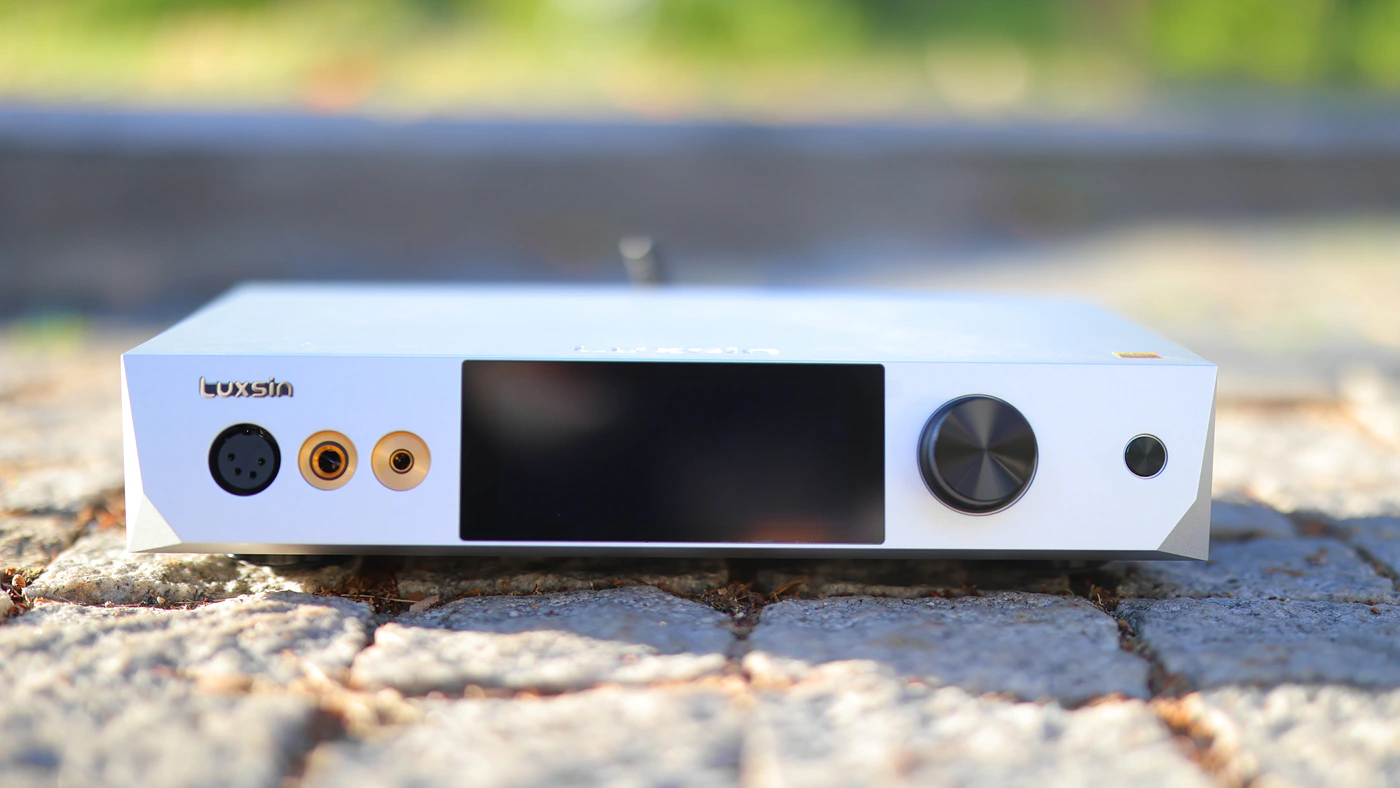
Luxsin X9 vs Dethonray Listening M1 (1099 USD vs 2599 USD) – Listening M1 is an excellent small-size unit, but physically it lacks all the inputs and outputs of X9, so if you need versatility, X9 is far more versatile, featuring XLR Balanced Line Outs, Preamp function, multiple headphone outputs, analogic inputs, and so much more, including EQ and complex soundstage + tone tweaking, all of which M1 does not focus on.
To keep things fair, I disabled all enhancements on both, and judged the sound as it comes, situation in which Listening M1 has a slightly higher driving power, especially with ultra hard to handle headphones, but it has a higher noise floor, audible with IEMs and even sometimes with headphones, at least compared to X9 which is truly silent. Sonically, M1 sounds much warmer, more precise, has a smoother treble, and a more dry sound, while X9 sounds more fluid, more dynamic, more musical, harmoniously rich, and more natural. Out of the two, X9 is far more versatile and generally can adapt to more headphones, and IEMS, while M1 is perfect if you want its specific blend of sound and signature.
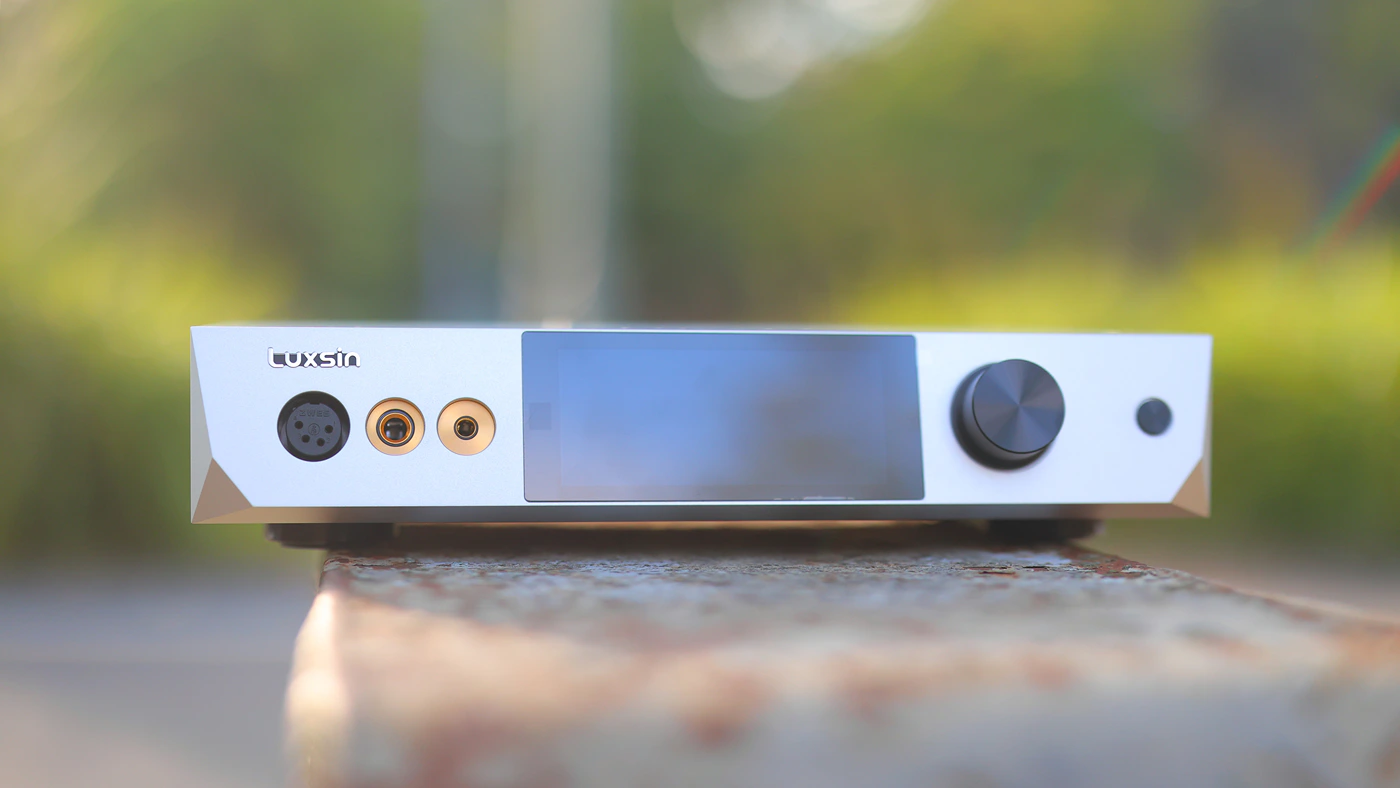
Luxsin X9 vs Keces S3 (1099 USD vs 1300 USD) – Keces S3 is at this point an oldie but goodie kind of DAC headphone AMP, having been one of the oldest desktop DACs that we’ve reviewed, but still a big favorite of mine, and it is about as versatile as X9, minus the EQ and display which are central elements of X9 and rather big reasons to buy it. S3 has all the inputs and outputs of X9, a higher driving power, but a different sound.
Speaking of which, Keces S3 is more neutral, has a higher detail level, but has no advanced EQ like X9. I found that using simple or even complex tweaks, you can squeeze more, if you don’t want the pure DAC performance that your system can offer. X9 is perfect if you have the patience and like to play with sound, while S3 is a very bright, neutral, crisp, ultra revealing and detailed listening experience that’s just pure clarity into your music. S3 is more analytical, it is ideal if you want to hear everything, bright and crisp, while x9 is more natural, warmer, smoother and less fatiguing.
Value and Conclusion
With a price tag of 1100 USD, Luxsin X9 can squeeze so much more from a system than most desktop DAC AMPs, it is not necessarily a purist DAC AMP, but it can pack a punch and kick much harder than most DACs around the same price point, it has soundstage enhancement, tone enhancement, complex EQ, instant response for the USB DAC function, and beautiful UV Meters, all working with the PRE too.
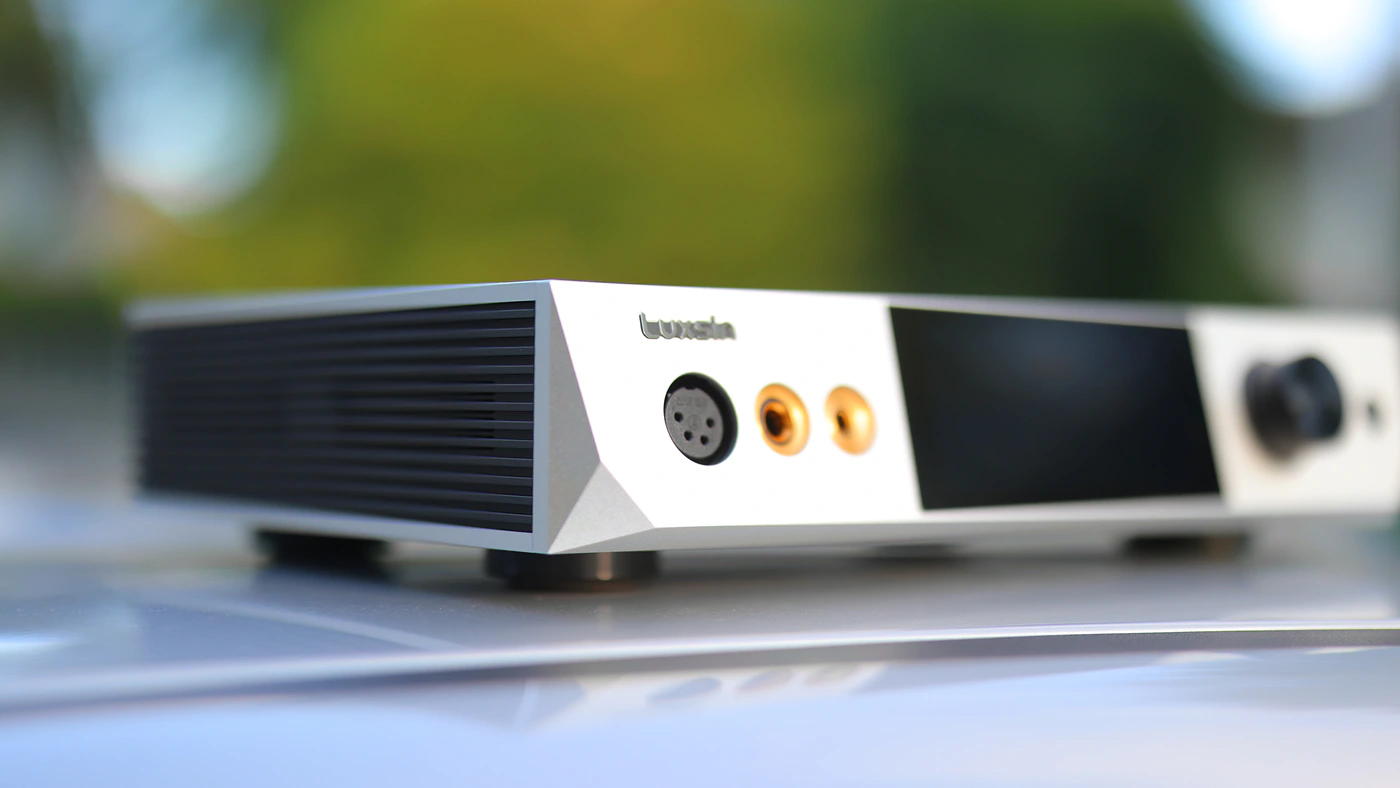
Award – Before the end of today’s review, I want to add the Luxsin X9 to the Audiophile-Heaven Hall Of Fame for the excellent software, reliable support and outstanding EQ implementation with complex tone, and just for the overall versatility and price performance ratio of the unit.
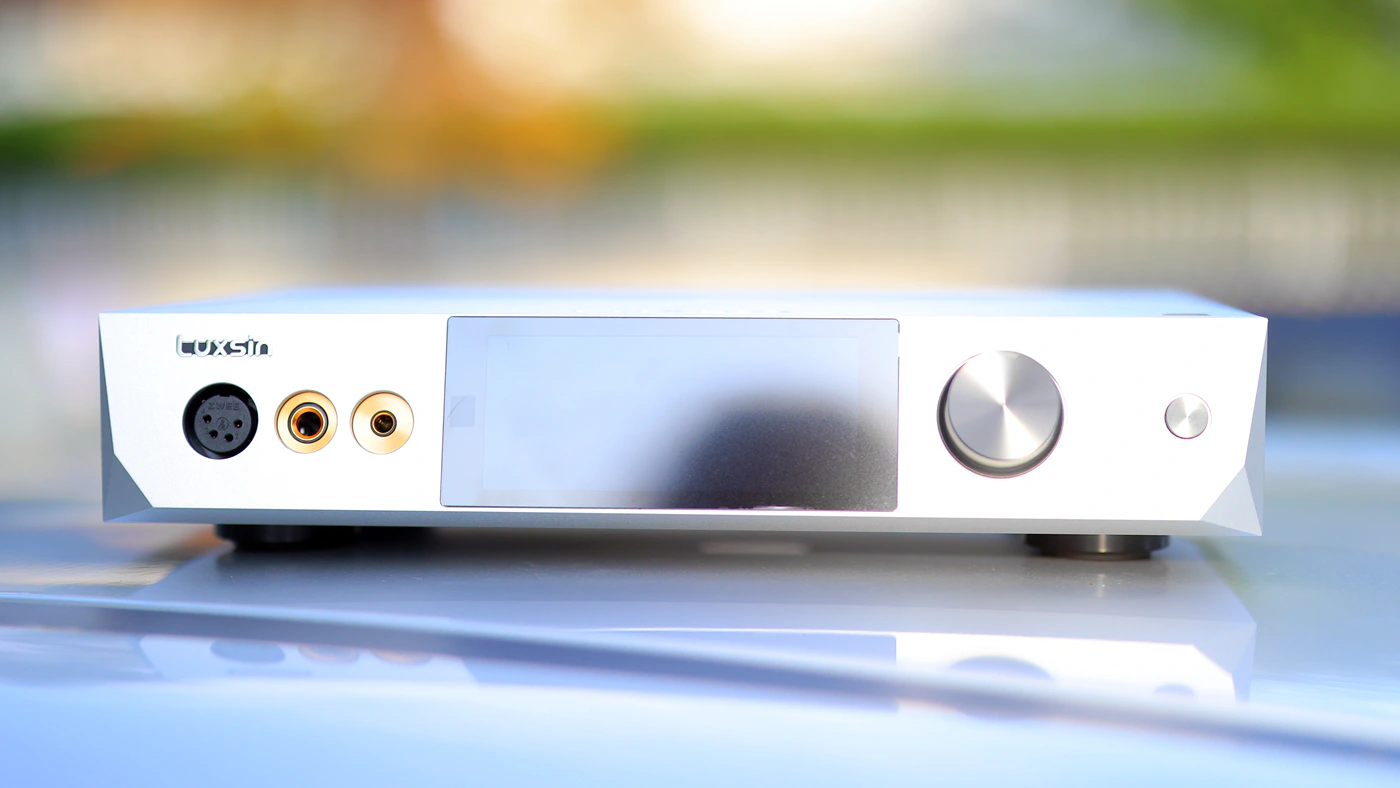
At the end of the day, if you’re looking for complete, XLR Preanmplifier output, RCA line in and line out, VU Meters that look dazzling, balanced and SE headphone outputs, touchscreen operation, and for a sound that is engaging, dynamic, but above everything easy to tweak and squeeze and stretch the performance of your system with, Luxsin X9 is one of the best DAC / Headphone AMPs you can purchase today, being an option that looks as high-end as it sounds, beautiful from case to output.
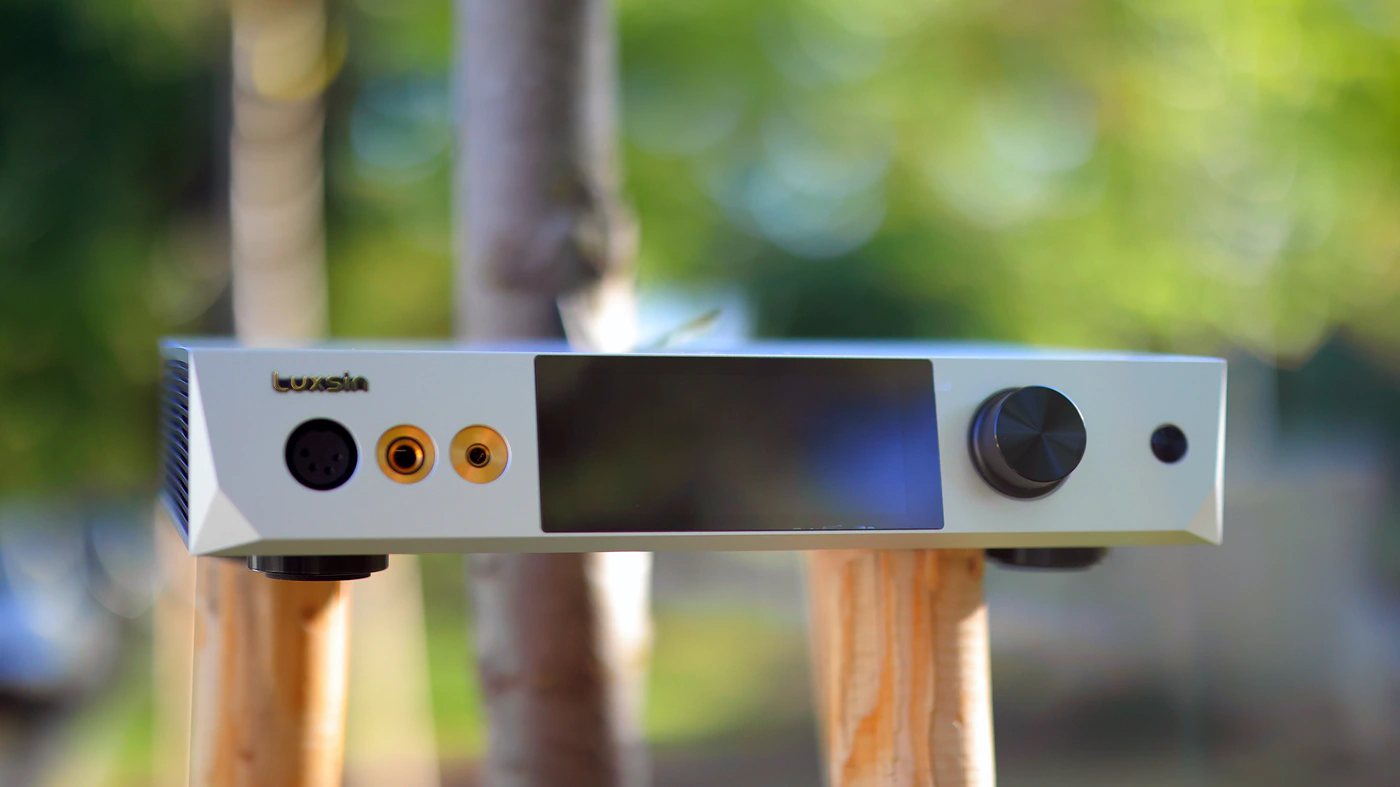
PROs
- Outstanding design and looks, with a hi-res VU Meter, and display
- Colorful display and easy to use touchscreen for configuring EQ and tone control
- Powerful headphone output and preamplifier output
- Excellent control and low noise, even with Class A Stereo AMPs, you will not hear the background noise
- Dynamic and engaging sound
- At default, with all enhancements turned off, it sounds really flat, reference, tight and controlled
- Can easily add up to 10 dB of bass, including sub bass, powering up systems with both speakers and headphones as the main transducer
- Outstanding price performance ratio
- Can increase the soundstage size with its effects
- No issues during operation, very stable and reliable
- Excellent overall versatility
Cons
- Default sound is super reference, it sounds far better if you use the available tweaks
- Audiple pop sound when turning it on and off, if it is working as a PRE and powering stereo amplifiers
- Audible pop with volume changes, as it clicks through the relays
Product Link
Amazon – https://amzn.to/4qlJY3K
Aliexpress – https://s.click.aliexpress.com/e/_c30I8wzN
--- Please remember to stay safe, and always have fun while listening to music!---
- If you have a dime to spare, please donate, and help us! It would make the day brighter for me and my wife-
Full Playlist used for this review
We listened to more songs than those named in this playlist, but those are excellent for identifying a sonic signature. I recommend trying most of the songs from this playlist, especially if you’re searching for new music! The playlists are different for Spotify, Tidal and Youtube, and based on the songs I enjoy and are available on each!
https://www.youtube.com/playlist?list=PL_cjBXGmwSHSdGcwuc_bKbBDGHL4QvYBu
https://open.spotify.com/playlist/5J3oloz8Riy9LxEGenOjQ0?si=979ba4f082414be7
https://tidal.com/browse/playlist/330fd544-8e5b-4839-bd35-676b2edbb3d5
--- Contact Us ---





